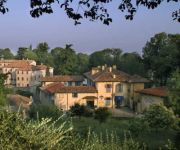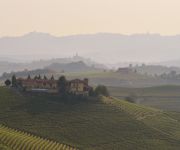Facts and Data
Webpages:
Official Unesco Page
Basis Data:
Unesco World heritage since: 2014
Size of heritage: 10,789 ha
- Buffer zone: 76,249 ha
Coordinates:
Longitude: 7,964°
Latitude: 44,609°
Summary
This landscape covers five distinct wine-growing areas with outstanding landscapes and the Castle of Cavour, an emblematic name both in the development of vineyards and in Italian history. It is located in the southern part of Piedmont, between the Po River and the Ligurian Apennines, and encompasses the whole range of technical and economic processes relating to the winegrowing and winemaking that has characterized the region for centuries. Vine pollen has been found in the area dating from the 5th century BC, when Piedmont was a place of contact and trade between the Etruscans and the Celts; Etruscan and Celtic words, particularly wine-related ones, are still found in the local dialect. During the Roman Empire, Pliny the Elder mentions the Piedmont region as being one of the most favourable for growing vines in ancient Italy; Strabo mentions its barrels.
Location on Map
Show bigger map on Openstreetmap
Introduction
The Vineyard Landscape of Piedmont: Langhe-Roero and Monferrato is a UNESCO World Heritage site located in the Piedmont region of Italy. This cultural landscape is renowned for its exceptional vineyards, which have been cultivated for centuries and produce some of the finest wines in the world. The site covers an area of approximately 10,789 hectares and includes five distinct wine-growing areas: Langhe, Roero, Monferrato, Asti, and Alessandria.
History
The history of viticulture in this region dates back to ancient times. The Etruscans and Romans were among the first to recognize the favorable climate and soil conditions of the area, which made it ideal for grape cultivation. Over the centuries, the vineyards of Piedmont became an integral part of the local economy and culture.
In the 19th century, the region experienced a significant expansion of vineyards and wine production. This was largely due to the introduction of new grape varieties and improved winemaking techniques. The wines of Piedmont gained international recognition and became highly sought after.
During the 20th century, the vineyard landscape faced various challenges, including urbanization, industrialization, and changes in agricultural practices. However, the local communities and wine producers recognized the importance of preserving their cultural heritage and took measures to protect and promote the vineyards.
Current State
The Vineyard Landscape of Piedmont: Langhe-Roero and Monferrato is currently in a well-preserved state, thanks to the efforts of local authorities, wine producers, and the community. The landscape retains its traditional agricultural practices, with vineyards carefully terraced on the hillsides and interspersed with small villages, castles, and farmhouses.
The site is not only a testament to the long-standing tradition of winemaking but also showcases the harmonious relationship between humans and nature. The vineyards are cultivated using sustainable methods, respecting the natural environment and biodiversity of the region.
The wines produced in this area are highly regarded worldwide. Piedmont is particularly famous for its red wines, such as Barolo and Barbaresco, made from the Nebbiolo grape variety. These wines are known for their complexity, elegance, and ability to age. The region also produces excellent white wines, including Moscato d'Asti and Asti Spumante.
The UNESCO designation has further enhanced the recognition and protection of the vineyard landscape. It has encouraged sustainable tourism, promoting wine-related activities, such as vineyard tours, wine tastings, and cultural events. Visitors have the opportunity to explore the picturesque vineyards, learn about winemaking traditions, and savor the unique flavors of Piedmontese wines.
Conclusion
The Vineyard Landscape of Piedmont: Langhe-Roero and Monferrato is a remarkable UNESCO World Heritage site that showcases the rich history and cultural significance of winemaking in the region. The well-preserved vineyards, traditional agricultural practices, and exceptional wines make it a must-visit destination for wine enthusiasts and cultural travelers alike. The site stands as a testament to the enduring relationship between humans and nature, and the importance of preserving our cultural heritage for future generations.
Hotels and places to stay
Il Boscareto Resort & Spa
Antico Podere Tota Virginia
Hotel Villa Beccaris
Le Torri Hotel
Agriturismo Gioco dell'Oca
Red Wine Camere
Barbabuc Relais du Silence
The Green Guesthouse Your best accommodation near Barolo
Agriturismo L'Angolo di Rosina
Tra Monti e Vigne
Videos from the area
Videos provided by Youtube are under the copyright of their owners.
















